Save money, water, and energy with these eco-friendly gardening ideas that are easily put into practice.
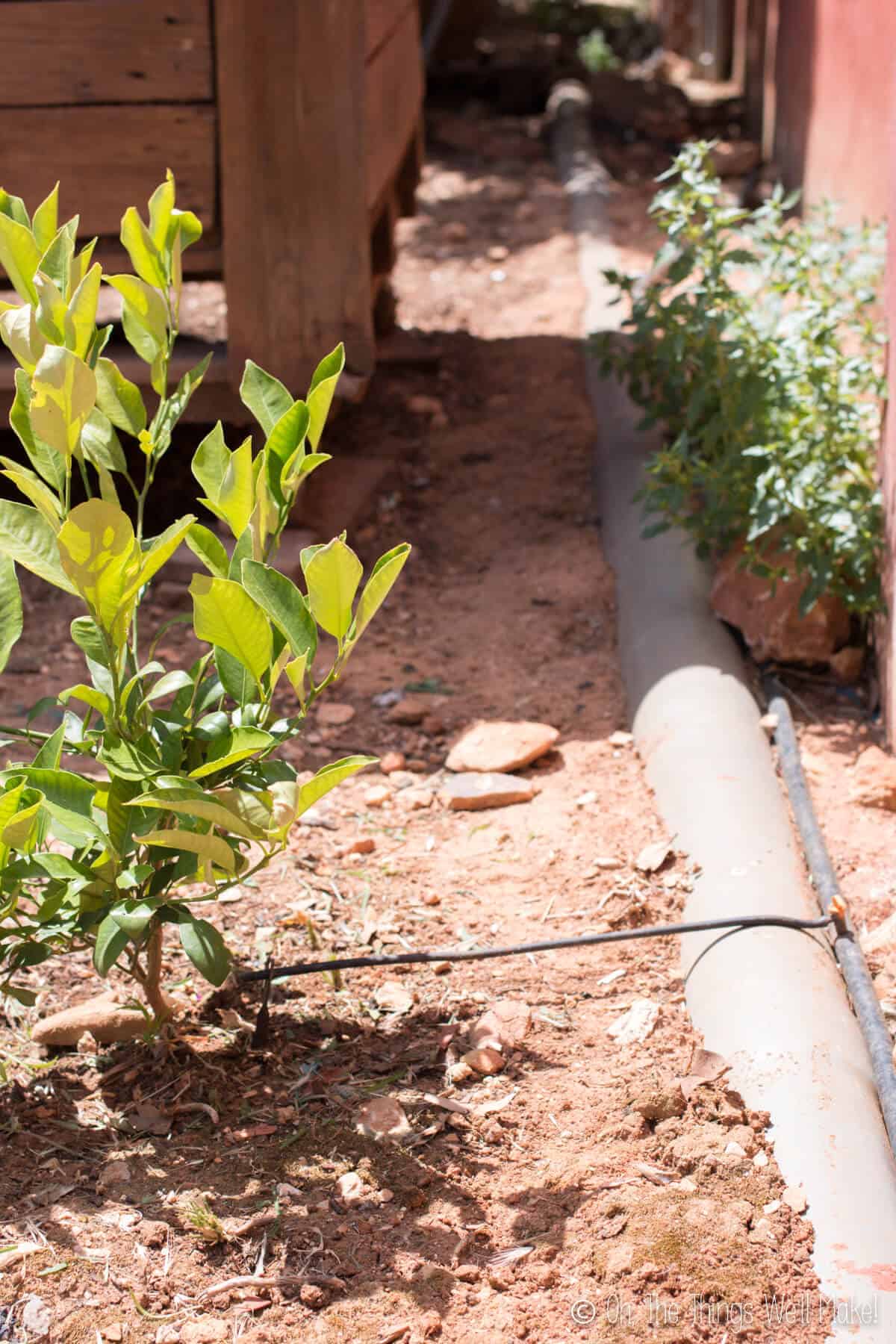
Table of contents
With the warmer weather finally arriving, we’ve been out in the garden a lot more lately.
We’ve cleared out the area where we plant our vegetables and cleaned up the herb garden so I could once again see my super cute and easy DIY garden markers. We also planted some veggie seeds in homemade biodegradable newspaper pots.
I like to grow my own herbs, fruits, and veggies so that we have full control over the food we eat. It’s satisfying to be able to eat fruits straight off our trees knowing they haven’t been sprayed with pesticides and chemical fertilizers.
My goal is to make an eco-friendly and sustainable garden. There are lots of ways that you can make your yard and garden more sustainable, and save money in the process.
What is a sustainable garden?
A sustainable garden is one that conserves resources. It can do so in several ways.
Sustainable gardening is based on chemical-free practices, organic methods, recycling, water and energy conservation, and waste reduction.
Ideally, a sustainable garden will use existing natural resources to thrive, using a minimal amount of outside resources. When planned strategically, one can use less water, and avoid the use of toxic chemicals.
Traditional gardening, on the other hand, often requires large amounts of water, chemical fertilizers, and toxic pesticides.
So how, exactly, does one start a sustainable, eco-friendly garden?
Choosing ideal plants
While it’s tempting to buy a variety of exotic plants for your garden, it’s not normally the most eco-friendly choice. I’m not saying that you can’t have a few exotic plants in your garden, but the majority of the plants in your garden shouldn’t require exceptional care.
Native species
One way to conserve water and other resources is to choose native plants.
Native plants are those that are indigenous to your region. They are already suited to your climate, rainfall, and soil types, so they require less fertilizer and water. Because they are also more accustomed to local birds, insects, and other wildlife, they tend to require less care.
The National Wildlife Federation has a native plant finder that can help you choose the right plants for your particular area and climate.
Drought-resistant plants
Rather than needing large amounts of water to help sensitive plants survive in dry seasons, choose drought-resistant plants instead. Often, native species are already accustomed to using little water.
Many herbs and ornamental grasses are drought resistant. Some of the more drought-resistant flowers include lantana and yarrow.
Choose pest-resistant plants
Some species, like many herbs, marigolds, and mums, naturally have insect-repelling abilities. (Mums actually have a substance known as pyrethrum that is used to make some insecticides.)
Other plants tend to repel other bothersome critters like mice or rabbits.
If you strategically plant those plants around your other plants, you can reduce the need for pesticides. (You can also add beneficial insects to help protect your plants against pests. More about that in a second…)
Group plants strategically
Not only is it smart to plant pest-repelling plants with other plants to help protect them, but there are other ways to group the plants to make your garden more sustainable.
For example, you can group species by water needs and/or fertilization considerations.
If you group together the plants that demand more watering in one section of your garden, and drought-resistant plants in another, you can more easily distribute a minimal amount of water effectively.
It’s also smart to plant flowers that attract bees near fruit trees and other plants that require pollination. (Make sure to consider if they are going to be in bloom at the same time.)
By grouping pollinating plants together, it helps keep the bees right where you need them.
How to save water
Planting native plants and drought-resistant ones aren’t the only ways to use less water. There are other ways to conserve water in your garden.
Mulch your garden.
Mulch can be made of wood chips, sawdust, leaves, bark, and even newspaper. The layer of mulch around plants conserves moisture within the soil and prevents water from evaporating. It is also a great way to prevent weeds from springing up.
Spread mulch in a thin layer around your plants to help keep in moisture, maintain a steady temperature, and reduce weeds.
Collect rain and “gray” water.
An easy way to conserve water in your garden is to use a rain barrel. Rain barrels collect water from your roof and gutter system that can later be used to water your plants. More sophisticated systems use pumps to move the water through a drip irrigation system.
You can also collect water from your kitchen sink and/or washing machine and recycle it for use in your garden. This water is often called “gray water.”
To err on the side of safety, use the gray water on ornamental plants and trees. Also, be careful about the type of water you collect. (It’s best to use biodegradable soaps and cleaners, and avoid using harsh chemicals like bleach if you’ll be collecting the water for use in the garden.)
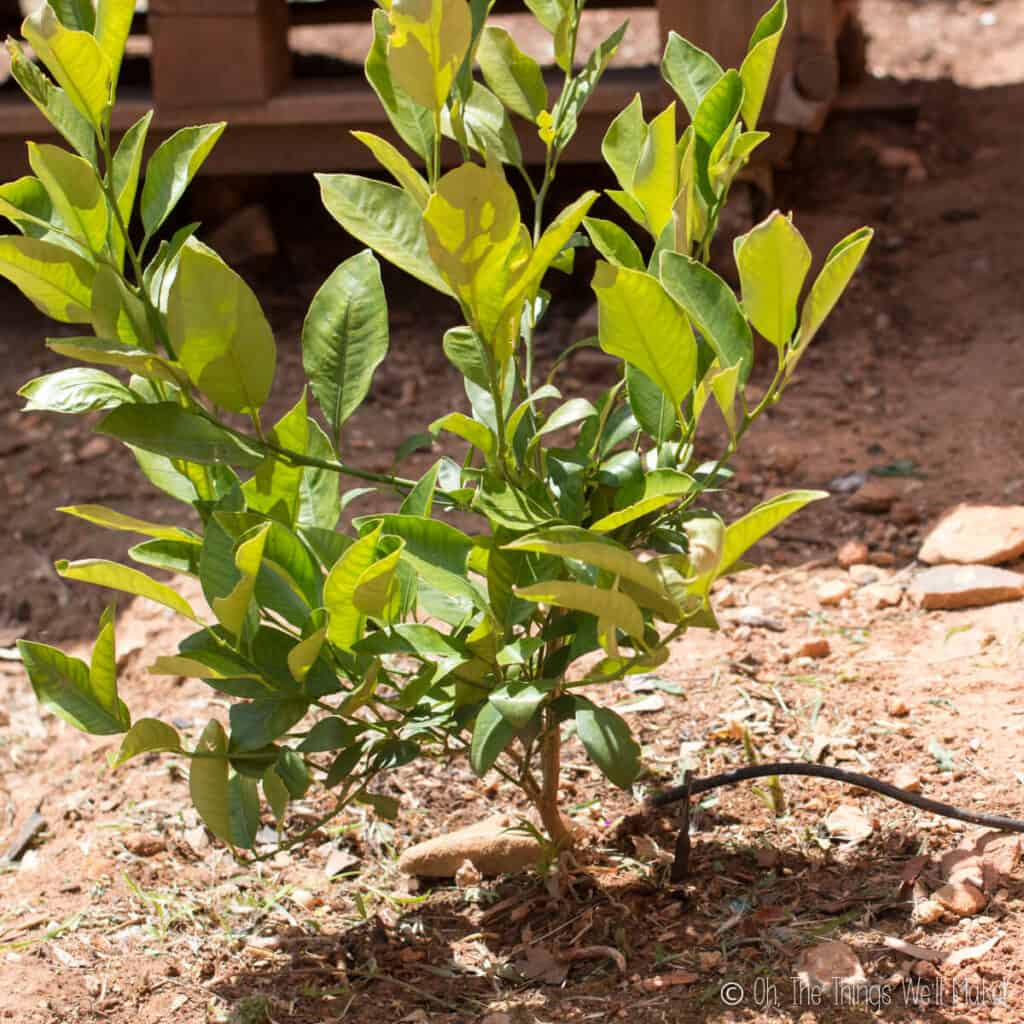
Use a drip irrigation system
Drip irrigation uses rubber hoses to directly water individual plants rather than randomly sprinkling water over a large area. Because water is directly targeted at the roots of plants, rather than wasted on areas where water isn’t needed, water is conserved.
Some irrigation systems use hoses, called soaker hoses, with small holes that distribute water along the length of the hose. Because they distribute small amounts of water near the ground, there is much less evaporation than with a sprinkler system. You can make a similar hose with holes in it or buy a drip irrigation system.
Drip irrigation systems often use a variety of sizes of hoses and tubes to directly bring water to each individual plant. That makes it even more targeted, leading to much less waste than with manual hose watering.

Water only when plants are in need.
It may sound obvious, but by assessing your plants’ water needs before watering can also help save water. By feeling the dampness of the soil and looking at other signs like the texture and color of the leaves, you’ll get an idea of if you really need to water or not.
It’s easy to set up an automatic watering system with a timer for regular watering, but remember that irregular weather can affect the need for water. For example, remember not to water right before or after it rains.
Eco-friendly pest control
Apart from using plants with insect-repelling properties, there are other non-toxic ways to keep your plants pest-free.
Beneficial insects
While some insects can ruin your crops or even kill off your plants, some insects can actually be very beneficial in the garden. (And, yes, they actually sell beneficial insects for use in your garden.)
We all know that bees are important for pollinating plants, but there are other helpful insects that can help protect plants by preying on many common garden insect pests. They offer a safer, natural alternative to pesticides.
- Ladybugs are great for eating aphids and other slow-moving insects in the garden like mites, scales, and mealybugs. You can even buy ladybugs for your garden.
- Beneficial nematodes are wormlike parasites that can help control insects in the soil. (You can also buy beneficial nematodes to add to your garden.) They aren’t harmful to earthworms but will hunt and kill insects such as ants, subterranean termites, and various kinds of beetles.
- Praying mantises help control everything from smaller insects like aphids to larger ones like crickets and grasshoppers. Keep in mind, though, that they will also eat other beneficial insects like ladybugs. While they can theoretically be used together, it may be more strategic to use them in different areas.
- Green Lacewings consume aphids and other small pests when in the larva stage. The adults lay their eggs near infested plants so their young can feed on the harmful insects.
- Pirate bugs are especially helpful against thrips.
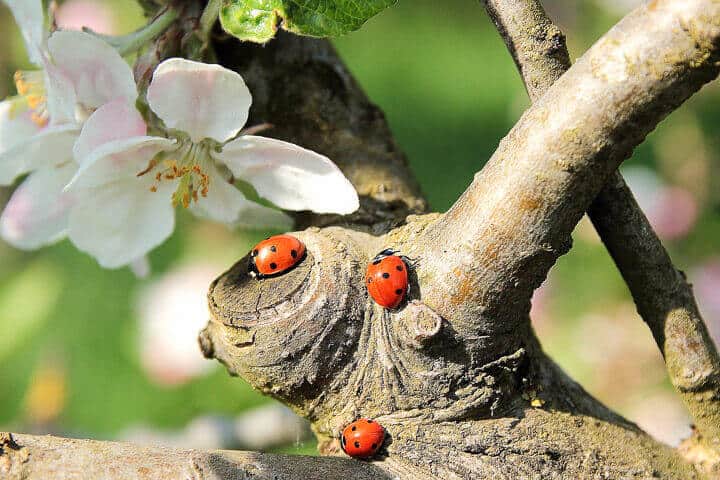
Fertilizing plants naturally
Food scraps, chicken manure, leaves, and weeds can be recycled and used to produce an effective natural fertilizer for your soil.
Using a compost bin
There are numerous types of compost bins. Most are made of plastic or wood and have small holes in the side to allow for airflow. You can make one from pallets or garbage pails, or buy one. (Or, you can even just pile up the materials in a corner of your garden somewhere.)
Inside the bin, the food and garden scraps break down over time, forming a dark, soil-like material, compost, that is perfect for fertilizing your garden.
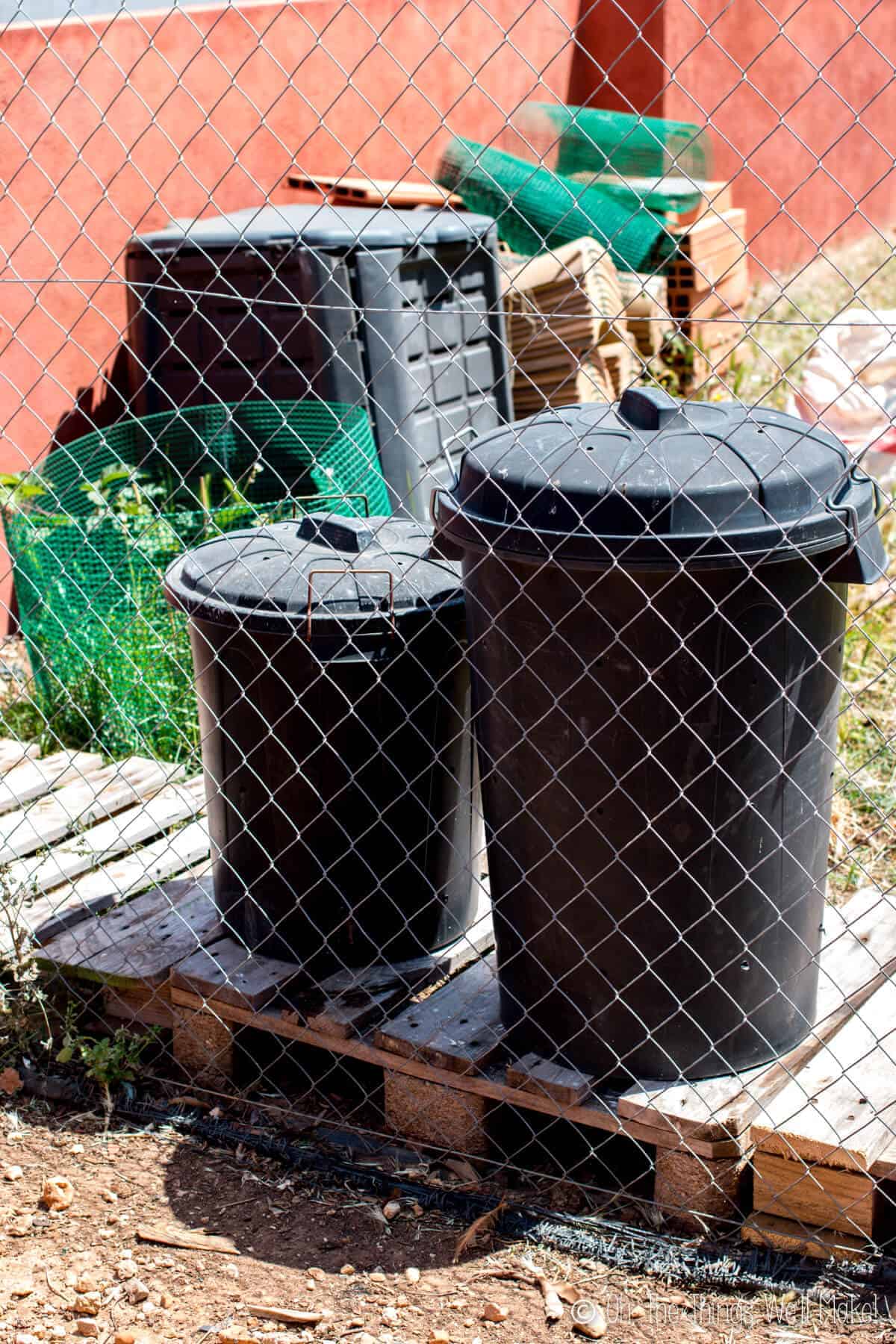
We add chicken manure, kitchen scraps, and garden waste to our compost piles. Each year, we work some of the finished compost into the soil where we plant our vegetables. Our soil is quite hard and clay-like, but over the years the compost has helped to make a much more workable soil. It also helps to add nutrients back into it.
Vermicompost
This year, we tried something new. We started several vermicompost bins. Vermicomposting uses red worms to help breakdown kitchen scraps and paper and cardboard.
The advantage of vermicomposting is that the worms help breakdown kitchen scraps very quickly. That helps you more rapidly convert waste into fertilizer for your garden.
On the other hand, the worms are sensitive to heat and moisture levels. So, you need to be careful about where you place your vermicompost bin. It should be kept out of the sun and in a covered location so that it isn’t hit directly by rain.
Kids also enjoy watching the worms multiply and break down your veggie scraps.
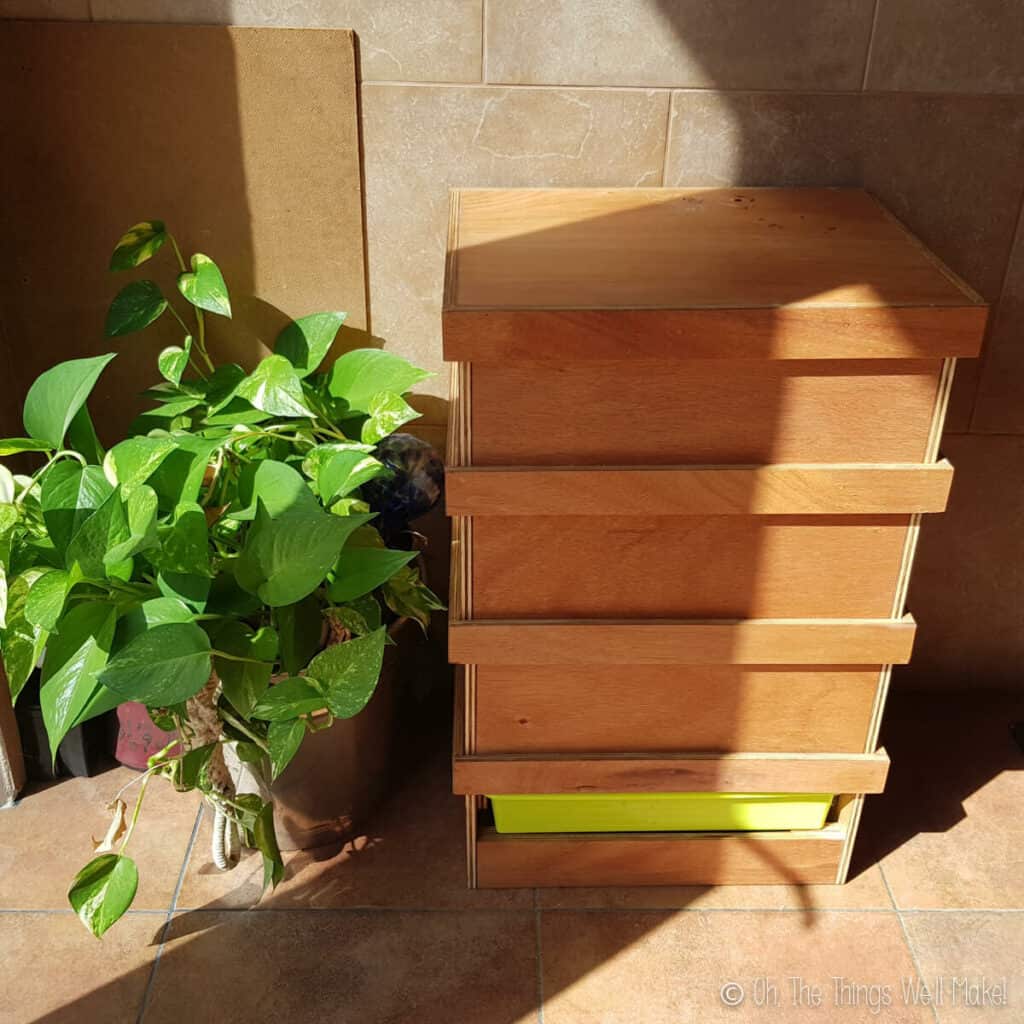
Our vermicompost bins. 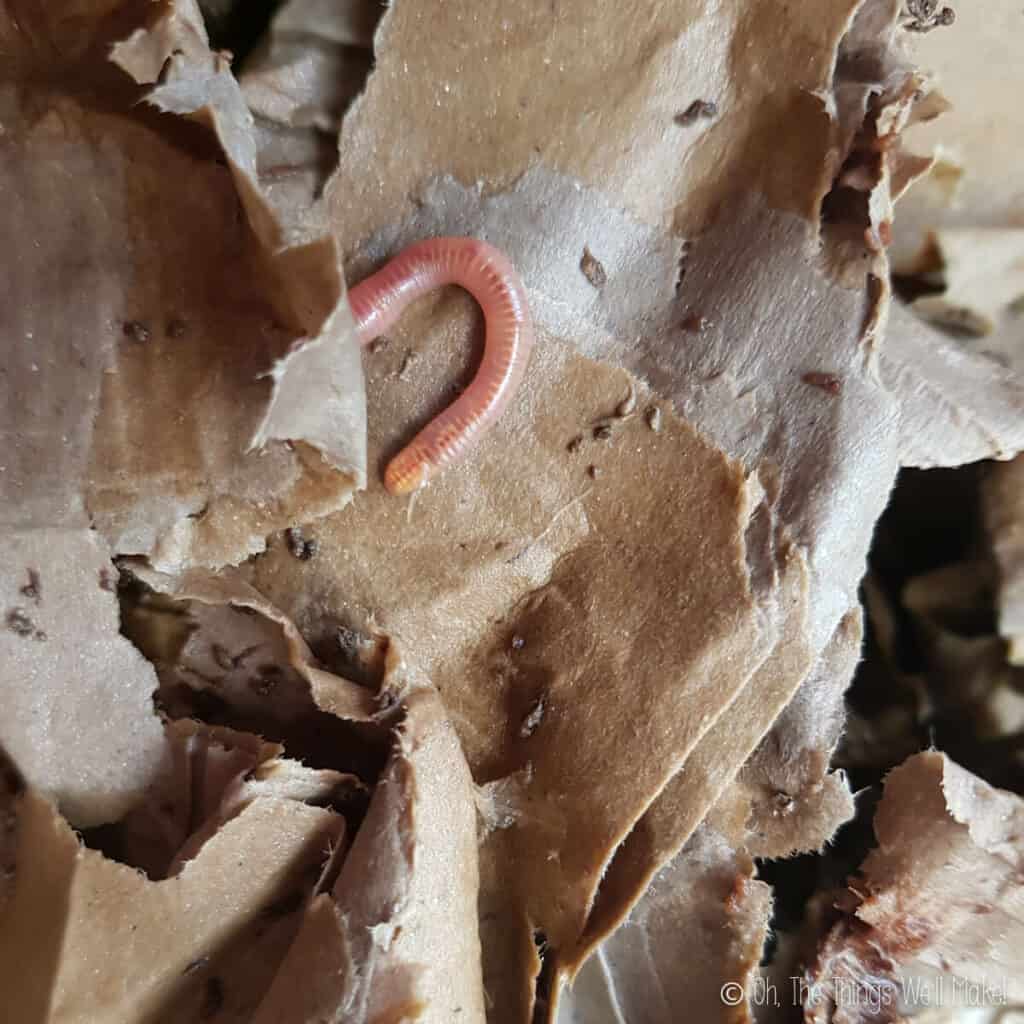
Red worms inside.
Natural weed control
Glyphosate, the active ingredient in Roundup, is one of the most highly used herbicides worldwide. It has been making the news a lot lately, though, due to its association with certain health conditions. The International Agency for Research on Cancer (IARC) of the World Health Organization has listed glyphosate as a probable carcinogen.
That’s not the only reason to avoid it, though. It has also been associated with disorders such as autism, Alzheimer’s, and attention deficit hyperactivity disorder, along with a whole list of health problems.
- Rather than use a toxic herbicide, you can simply remove weeds by hand. It’s best to try to uproot the weeds completely so that they don’t grow back from the remaining root segments.
- Mulch isn’t only helpful for conserving water, but it also helps reduce weed growth.
- Landscape fabric or newspaper sheets can also be used as a physical barrier that prevents weeds from growing in certain areas of your garden.
- Try pouring boiling water directly on younger weeds to kill them naturally.
- Salt and vinegar can also be used to kill off weeds, but be careful where you add them. They may also kill other plants.
Putting it all together
Hopefully, I’ve given you some ideas for ways to make your lawn and garden a bit more eco-friendly and sustainable. While you don’t have to use all of the ideas, even implementing just a couple of them can help you avoid the use of toxic chemicals and save money.
Happy gardening, all!
Update Information
This post was originally published on May 13, 2017. It was completely reorganized and rewritten in April of 2020 to give clearer and more actionable ways to make your garden more eco-friendly and sustainable.
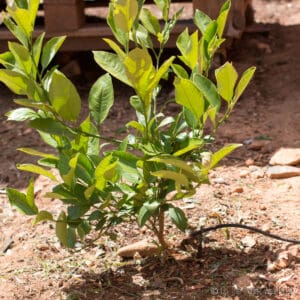
How to Plan an Eco-friendly Garden
Instructions
Choose native plants, drought resistant plants, and pest resistant ones.
- Native plants are those that are indigenous to your region. They are already suited to your climate, rainfall, and soil types, so they require less fertilizer and water. Because they are also more accustomed to local birds, insects, and other wildlife, they tend to require less care.
- Many herbs and ornamental grasses are drought resistant. Some of the more drought-resistant flowers include lantana and yarrow.
- Some species, like many herbs, marigolds, and mums, naturally have insect-repelling abilities. (Mums actually have a substance known as pyrethrum that is used to make some insecticides.)
Group plants strategically
- If you group together the plants that demand more watering in one section of your garden, and drought-resistant plants in another, you can more easily distribute a minimal amount of water effectively.
- It's also smart to plant flowers that attract bees near fruit trees and other plants that require pollination. (Make sure to consider if they are going to be in bloom at the same time.) By grouping pollinating plants together, it helps keep the bees right where you need them.
Save water by mulching, using rain and gray water, and using irrigation systems
- Mulch can be made of wood chips, sawdust, leaves, bark, and even newspaper. The layer of mulch around plants conserves moisture within the soil and prevents water from evaporating. It is also a great way to prevent weeds from springing up.
- An easy way to conserve water in your garden is to use a rain barrel. Rain barrels collect water from your roof and gutter system that can later be used to water your plants. More sophisticated systems use pumps to move the water through a drip irrigation system.
- You can also collect water from your kitchen sink and/or washing machine and recycle it for use in your garden. This water is often called “gray water.”
- Drip irrigation uses rubber hoses to directly water individual plants rather than randomly sprinkling water over a large area. Because water is directly targeted at the roots of plants, rather than wasted on areas where water isn’t needed, water is conserved.
- Some irrigation systems use hoses, called soaker hoses, with small holes that distribute water along the length of the hose. Because they distribute small amounts of water near the ground, there is much less evaporation than with a sprinkler system. You can make a similar hose with holes in it or buy a drip irrigation system.
Water only when plants are in need.
- It may sound obvious, but by assessing your plants' water needs before watering can also help save water. By feeling the dampness of the soil and looking at other signs like the texture and color of the leaves, you'll get an idea of if you really need to water or not. Don't water right before or after it rains.
Control pests with beneficial insects
- We all know that bees are important for pollinating plants, but there are other helpful insects that can help protect plants by preying on many common garden insect pests. They offer a safer, natural alternative to pesticides.
Fertilize plants naturally with compost
- Food scraps, chicken manure, leaves, and weeds can be recycled and used to produce an effective natural fertilizer for your soil. In a compost bin, the food and garden scraps break down over time, forming a dark, soil-like material, compost, that is perfect for fertilizing your garden.
- You can also make fertilizer from kitchen scraps quickly with a vermicompost bin. It uses worms to quickly break down the scraps.
Natural weed control
- Rather than use a toxic herbicide, you can simply remove weeds by hand. It's best to try to uproot the weeds completely so that they don't grow back from the remaining root segments.
- Mulch isn't only helpful for conserving water, but it also helps reduce weed growth. Landscape fabric or newspaper sheets can also be used as a physical barrier that prevents weeds from growing in certain areas of your garden.
- Try pouring boiling water directly on younger weeds to kill them naturally. Salt and vinegar can also be used to kill off weeds, but be careful where you add them. They may also kill other plants.
Notes
- Ladybugs are great for eating aphids and other slow-moving insects in the garden like mites, scales, and mealybugs.
- Beneficial nematodes are wormlike parasites that can help control insects in the soil. They aren’t harmful to earthworms but will hunt and kill insects such as ants, subterranean termites, and various kinds of beetles.
- Praying mantises help control everything from smaller insects like aphids to larger ones like crickets and grasshoppers. Keep in mind, though, that they will also eat other beneficial insects like ladybugs. While they can theoretically be used together, it may be more strategic to use them in different areas.
- Green Lacewings consume aphids and other small pests when in the larva stage. The adults lay their eggs near infested plants so their young can feed on the harmful insects.
- Pirate bugs are especially helpful against thrips.
 Español
Español

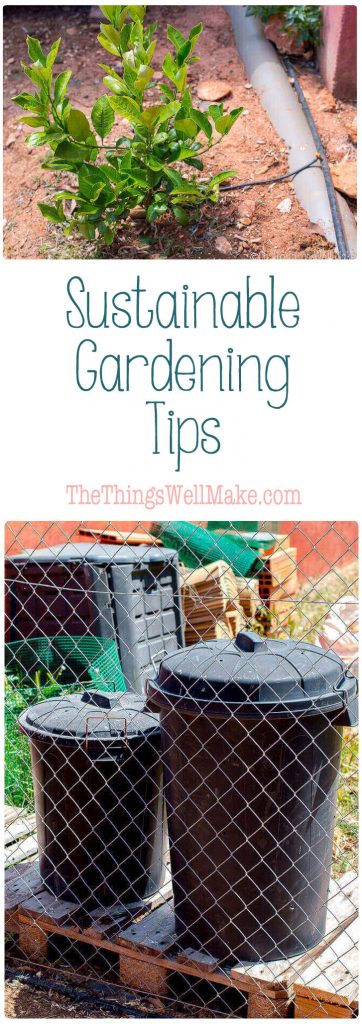
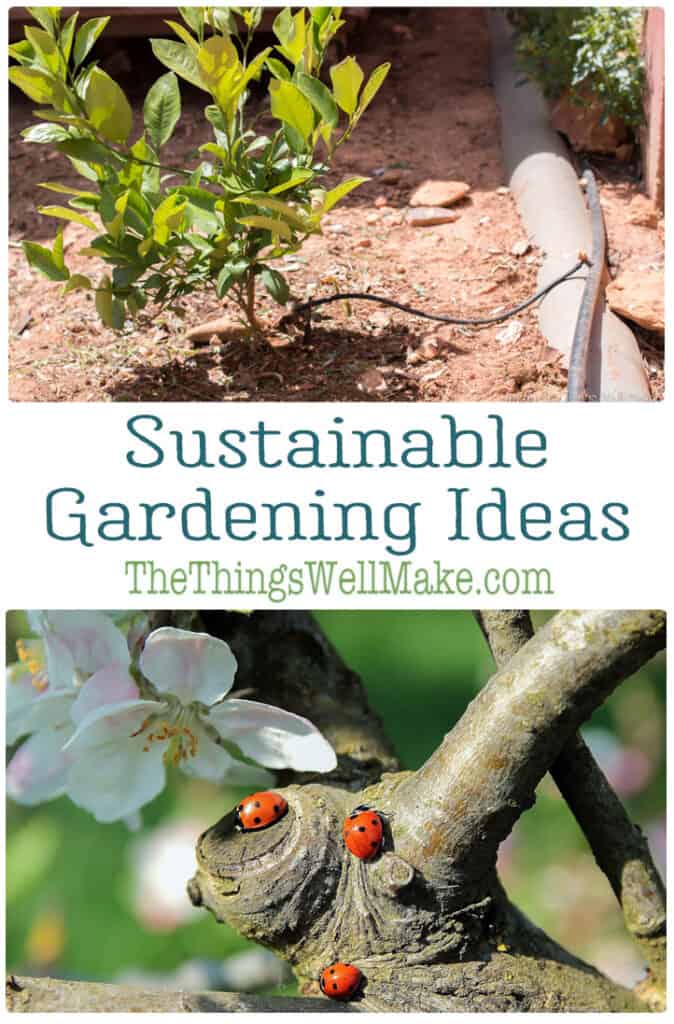
 Easy DIY Garden Markers
Easy DIY Garden Markers
Juliana
Hi Tracy, hope you and your family are fine! I was wondering if you have any tips or suggestions for building and keeping a good compost bin. I’ve always figured we desperately needed one (as we have a large garden and produce a considerable amount of compostable waste) but my family is against it claiming it would smell and/or attract undesirable animals. I know that would only be the case if I don’t build it and keep it properly, so I’m doing my homework and hopefully now I’ll be able to convince them. As your tips and posts have always helped me in various life-changing DIY subjects (like soaps!), any tips on this particular subject will be immensely appreciated! Thanks!!
Heidi
Removing weeds manually is also just the best way to do it – if you yank ’em out, they aren’t coming back! 🙂
Tracy Ariza
Great point!
Nellie Toole
Thank you for sharing this post. It is very helpful for me. Now I’ll follow you and make my garden better.
Claudia Beck
Very interesting to read on different ideas to have a sustainable garden , from choosing the right plants to using of composed organic matter as fertilizers they all made very good points. will definitely incorporate them while starting up my garden.
During my read ups i came across an article that is very gripping and interesting, i would highly recommend the below article it speaks about having a sustainable landscape and the points are very much engrossing, it has helped me in understanding the natural landscape as well as ensuring that it is economically and environmentally sustainable in the future.. The link is as follows:
http://revell.com.au/how-to-create-a-more-sustainable-landscape